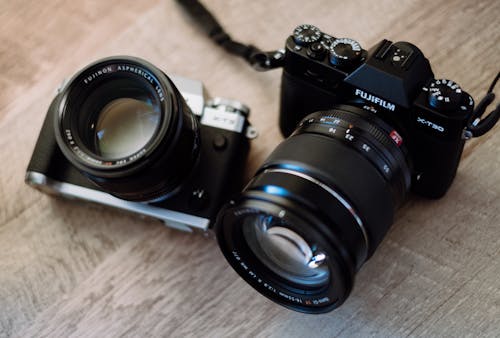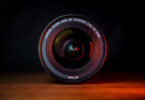Capturing Life’s Moments: How Cameras Have Revolutionized Photography
Cameras have completely revolutionized photography by enabling people to capture life’s moments in still images. Photography has come a long way since its inception, from the first camera obscura, invented by Leonardo da Vinci, to the modern digital cameras that we use today.
The invention of the camera was a game-changer for the art of photography. It allowed photographers to capture images quickly and easily, without the need for hours of sketching or painting. This made photography more accessible to the masses and paved the way for a new form of artistic expression.
The earliest cameras used film, a light-sensitive material that captures images when exposed to light. These cameras required careful handling of the film and were often bulky and cumbersome to use. However, the development of new materials and technologies led to the creation of smaller, more portable cameras that could capture images with greater speed and accuracy.
With the advent of digital photography, cameras have become even more versatile and accessible. Digital cameras allowed photographers to take hundreds or even thousands of images without the need to change film. They also made it possible to edit and manipulate images in ways that were previously impossible.
In addition to traditional cameras, many people now use their smartphones as a convenient and portable way to capture images. The cameras on smartphones have improved significantly over the years, and many now offer features such as high-resolution imaging and advanced image stabilization.
Overall, cameras have completely transformed the art of photography, making it more accessible, versatile, and convenient than ever before. They have given people the ability to capture and share life’s moments in a way that was once impossible, and they will continue to play a vital role in the art of photography for years to come.
Introduction to the Evolution of Photography
Photography has come a long way since its inception in the early 19th century. From the first camera obscura to the modern digital cameras, photography has undergone several evolutions and revolutions that have transformed the way we capture, store, and share images.
Early photographic techniques such as daguerreotype, calotype, and collodion process paved the way for the development of modern film-based cameras, which became popular in the 20th century. The advent of digital technology brought about significant changes, and digital cameras have now become ubiquitous.
Today, photography is not limited to cameras alone, with smartphones and other portable devices becoming increasingly popular as tools for capturing images. Social media platforms such as Instagram, Facebook, and Snapchat have further transformed the way we share and view images, making photography a universal language accessible to all.
In this context, the evolution of photography has been a journey of technical innovation, artistic experimentation, and cultural transformation. Through this evolution, photography has become an integral part of our lives, capturing memories, documenting history, and expressing our individual and collective identities.
The Invention of the Camera
The invention of the camera can be traced back to the 19th century. The first practical photographic process was invented by Louis-Jacques-Mandé Daguerre and Joseph Nicéphore Niépce in 1837. They called it the daguerreotype, and it involved exposing a metal plate coated with a light-sensitive material to light to produce an image. This process was widely popularized and became a significant step towards the development of modern photography.
However, the first known camera obscura, which is considered the precursor to the modern camera, can be traced back to the ancient Greeks. In the 11th century, the Arabic scholar Alhazen wrote about the camera obscura in his book “Book of Optics,” describing how light passing through a small hole could project an image onto a surface.
The camera obscura was used by artists as a tool for drawing and painting, allowing them to trace images onto paper or canvas. The invention of photography led to the development of cameras that used lenses to focus light and capture images on film.
Over the years, cameras have evolved significantly, from bulky and cumbersome devices to compact and portable cameras that can fit in a pocket or even be integrated into smartphones. The evolution of the camera has been driven by technological advancements and a desire to make photography more accessible and convenient for everyone.
Read More: Experience the Future of Home Lighting with Nanoleaf Matter A19 Smart Bulb
Impact of Cameras on Photography
Cameras have had a tremendous impact on the art of photography, revolutionizing the way we capture, store, and share images. Here are some ways in which cameras have impacted photography:
- Increased Accessibility: Cameras have made photography accessible to more people than ever before. With the advent of affordable and easy-to-use cameras, anyone can now capture images and express their creativity through photography.
- Faster and More Efficient: Cameras have made photography faster and more efficient, enabling photographers to capture images quickly and accurately. This has made it possible to document important events and moments in history, such as news events, social movements, and scientific discoveries.
- Improved Quality: Cameras have also improved the quality of images captured. Today’s cameras use advanced sensors, lenses, and image processing technologies that produce images with high resolution, color accuracy, and sharpness.
- Creative Expression: Cameras have allowed photographers to explore their creativity and experiment with new techniques and styles. From portrait photography to landscape photography, from black and white to color, the possibilities are endless.
- Digital Revolution: The introduction of digital cameras has completely transformed the world of photography. Digital cameras allow photographers to instantly view, edit, and share their images, making the process faster and more convenient than ever before.
Advancements in Camera Technology
Camera technology has advanced rapidly over the years, revolutionizing the way we capture, store, and share images. Here are some key advancements in camera technology:
- Digital Cameras: Digital cameras have completely transformed the world of photography, allowing photographers to capture and store images digitally. Digital cameras have eliminated the need for film, making it easier and more convenient to take and store images.
- High-Resolution Sensors: Modern cameras use high-resolution sensors that capture images with incredible detail and clarity. This allows photographers to capture images that are crisp, sharp, and full of detail.
- Improved Autofocus: Autofocus technology has improved significantly, allowing cameras to quickly and accurately focus on subjects. This has made it easier to capture images that are in focus, even in low light conditions.
- Image Stabilization: Image stabilization technology has also advanced, making it possible to capture stable, blur-free images even when shooting handheld or in low light conditions.
- Wi-Fi and Bluetooth Connectivity: Many modern cameras now feature Wi-Fi and Bluetooth connectivity, making it easy to transfer images wirelessly to other devices or share them directly on social media.
- AI and Machine Learning: The use of artificial intelligence (AI) and machine learning in cameras is becoming more common, allowing cameras to analyze scenes and optimize settings for the best possible image quality.
- Compact and Mirrorless Cameras: The development of compact and mirrorless cameras has made it possible to capture high-quality images in a small, portable package. These cameras are ideal for travel and street photography, allowing photographers to capture images on the go.
- Overall, the advancements in camera technology have made photography more accessible, versatile, and convenient than ever before. These innovations have opened up new possibilities for photographers and continue to drive the evolution of photography as an art form.
Conclusion
The evolution of cameras has had a significant impact on the world of photography. From the invention of the daguerreotype to the digital revolution, cameras have transformed the way we capture, store, and share images. The accessibility and convenience of cameras have made photography a universal language that can be used to tell stories, express emotions, and document important moments in history. With advancements in camera technology such as high-resolution sensors, improved autofocus, and AI, the possibilities for photography are endless. As cameras continue to evolve, it is exciting to imagine the future possibilities and innovations in the field of photography.







[…] Read More: Capturing Life’s Moments: How Cameras Have Revolutionized Photography […]